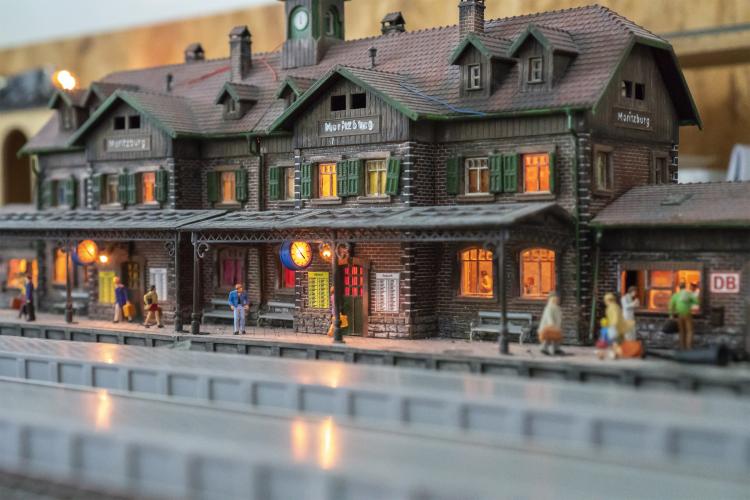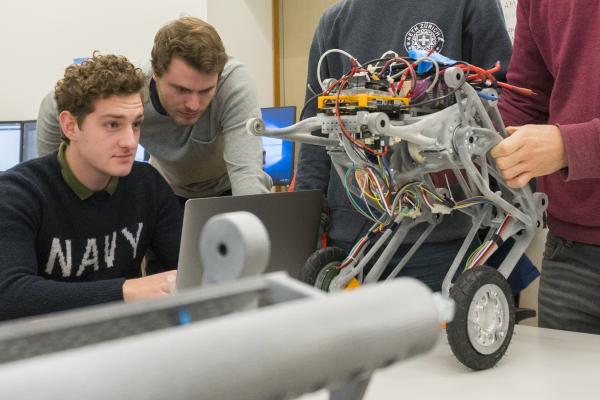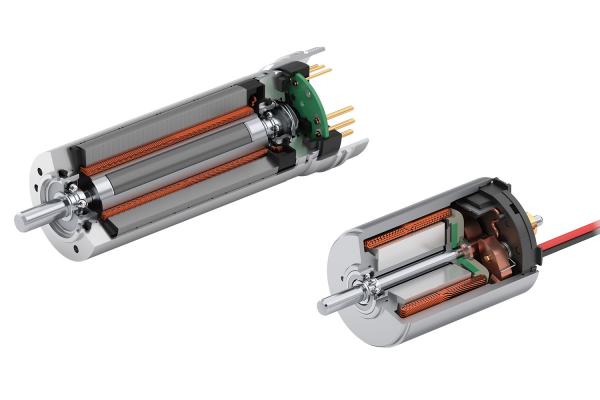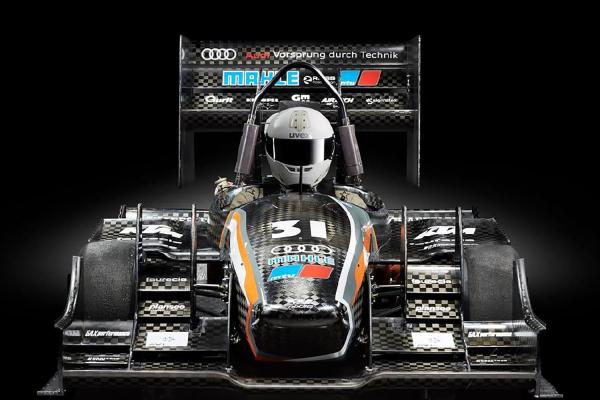Noiselessly and very slowly, the locomotive starts moving, millimeter by millimeter. There is no jerking or stutter. The train accelerates smoothly to a steady cruise, gently whirring past light signals, woods, and train stations that were made by hand over thousands of hours. Christian Dörsam smiles. “This is how a locomotive runs after I swapped the factory motor for one from maxon.”
An entire room of Christian's apartment in Chur is dedicated to his passion: model railroading. In his main job, the 42 year-old is – what else could it be – a train attendant at Rhätische Bahn. Repairing and converting model railroad vehicles is his side job. Business is good: At the moment, Christian Dörsam can't take any jobs from new customers. However, he is planning to reduce his hours working as a train attendant and focus more on his model railroad service.

An open locomotive and two drives: a standard motor (top), and a maxon motor with a new flywheel and pinion below. Careful preparations and technical skills are required for the new motor to fit into the locomotive.
One may marvel at the fact that high-tech motors from maxon are renowned and appreciated among model railroaders – after all, it's “just” a hobby with toys. “New customers sometimes get a little skeptical when they hear that the material cost alone for a new motor is around CHF 120. They ask themselves if it's really worth it.” After all, you can find DC motors on the Internet for less than CHF 30 apiece. However, quality has its price, says Christian Dörsam. And when the remodeled locomotive is running on the rails with the new motor, the investment is already forgotten. “No customer has ever regretted getting a maxon drive for their locomotive.”
Company offers retrofitting kits
Christian Dörsam is in close communication with SB Modellbau, a small company in southern Germany. The company purchases most of its motors from maxon and offers complete retrofitting kits. With some locomotives and self-propelled railcars from the huge portfolio of the various manufacturers, installing a new motor is so easy that even less technically skilled customers can do it. However, often the help of an expert is needed – and that's where Christian Dörsam comes in. Many locomotives and railcars require additional cutting work and other preparations to fit the motor into the tight housing so that it integrates seamlessly into the drive system, which also has a flywheel, gearhead, and electronics. Careful attention to detail is required for the locomotive to work reliably for years.
The 42-year-old has accumulated a wealth of knowledge over the years and continuously works to expand his expertise. “A lot has changed, especially in electronics. In the old days, you just had a transformer and two power wires on the rails.” However, digital technology has left its mark on the world of model railroads. “Nowadays, you can turn each little lamp on and off from the digital control center. You can precisely control every switch and every locomotive.” On the Internet, you can even find various sounds that can be stored on the sound chip of a locomotive to simulate the various sounds of electric and steam locomotives accurately. That's what you need when a train is running with maxon motors – otherwise the silence would be at odds with a proper railroad atmosphere.






